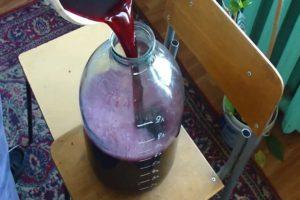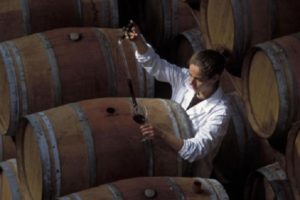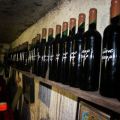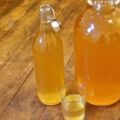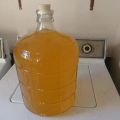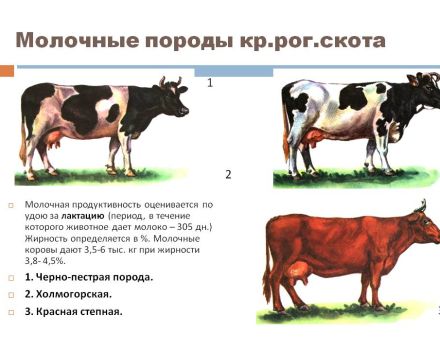TOP 5 Ways to Stop Wine Fermentation at Home
Experienced winemakers know how to stop the fermentation of homemade wine, everyone uses their own method. The process of a chemical reaction involving enzymes is required when making alcohol from grapes, fruits or berries. At the same time, special substances are released that decompose sugars into carbon dioxide and ethyl alcohol. To obtain a high-quality alcoholic drink, you need to know at what stage and how to forcibly interrupt this process.
When do you need to stop the wine fermentation process?
To interrupt the fermentation process at a certain time is required to obtain wine of the required strength, rich, sweet taste. Experienced winemakers advise to slow it down after removing the wine from the lees, before the sealing stage.
After the filtration procedure, more sugar is poured into the drink for taste. In this case, the wine begins to ferment again, if you do not interrupt this, the product will turn out to be dry and very strong.
In addition, it is necessary that microorganisms, lactobacilli, yeast are not activated and do not harm the quality of the finished home product.
Fermentation is an important factor in obtaining a quality drink.
Fermentation is the processing of sugars (glucose and fructose) into ethyl alcohol and carbon dioxide, an obligatory biochemical reaction, the basis of winemaking. The yeast found in the drink causes a violent reaction during its production. At this time, the taste, aroma, color, and quality of the future wine are laid. For the manufacture of a hop drink, wild wine yeast or sourdough is used. The following conditions are also required: a warm, darkened, dry place, where the optimum air temperature is + 20 ... + 22 ° С, but not lower than +16 ° С and not higher than +30 ° С.
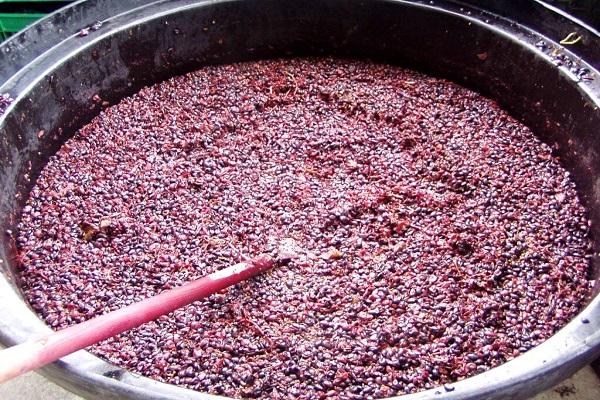
The process begins in the workpiece after 6-12 hours, provided that all technology is observed, several stages are distinguished:
- Fermentation - yeast begins to multiply in a container with prepared raw materials.
- Violent - yeast occupies the entire volume of the liquid, releases alcohol, foam forms on the surface, you can hear a characteristic hiss. Duration - 4-8 days.
- Quiet - the base of the future wine ferments until all the sugar is processed, the period depends on its content, on average - 20 days, the number of yeast decreases.
After that, the wine is poured into a clean container, tasted, sugar is added to obtain a sweet or semi-sweet drink and put on fermentation. It lasts 30-40 days. During this period, it is required to pay increased attention to the future product for its best quality. Therefore, it is important to know how to interrupt fermentation in young wine.
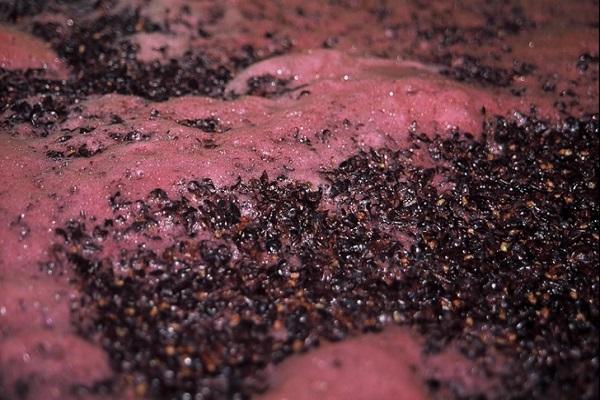
How to stop wine fermentation at home
There are several different ways to stop the fermentation process of a grape hop drink at home.
Fortification
One easy way is to stop fermentation with alcohol. It is known that at a high concentration of 16% or 17-18%, yeast dies. This method is recommended in exceptional cases.
It is important to correctly enter the dose - usually such calculations are used. To increase the wine material by 1 degree, add 2% vodka or 1% alcohol by volume of the drink. Vodka needs 2 times more alcohol, since its degree is weaker.
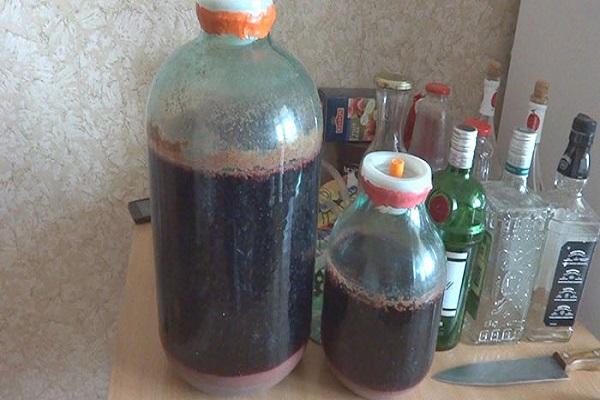
For example - 10 liters of wine, where the strength is 10 degrees, must be increased to 16 degrees. This means that you need 2.4 liters of vodka, and 1.2 liters of alcohol.
After measuring the required amount of alcohol or vodka, pour it into the wine, mix thoroughly. So that both liquids are thoroughly mixed with each other, let the product stand for 10-15 days. After a while, the resulting drink is removed from the sediment, poured into bottles for storage.
Disadvantages of the method - the wine becomes strong, the smell of vodka is felt, the taste changes.
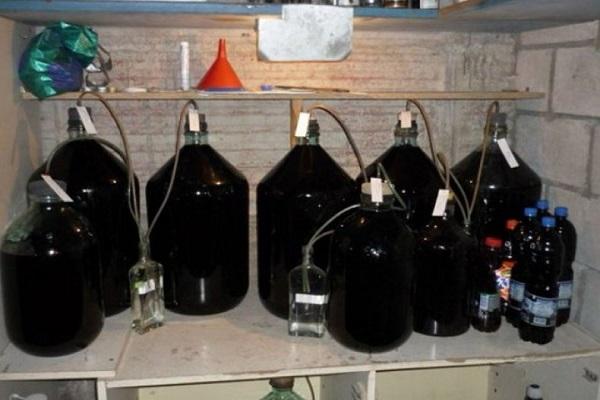
Cryostabilization
The chemical reactions of sugars to the appearance of alcohol proceed at a high temperature. The method of cryostabilization or stopping fermentation by cold suggests putting the drink in a room where the air temperature is lowered to + 2 ... + 10 C. But a lower temperature is not recommended, it will spoil the taste of young wine. They keep the drink there for 5 days, during which time the activity of the wine yeast stops, and they settle at the bottom of the dishes. In this case, the yeast does not die completely, but goes into a state of suspended animation or "hibernation".
Then the alcoholic drink should be drained so that the yeast remains at the bottom. Store containers with wine at a temperature not higher than +16 FROM.
The advantages of cryostabilization are that the taste, color, and smell of the drink do not change, and it lightens. Cons - the procedure does not guarantee the complete settling of the yeast, perhaps a small amount will remain in the wine.
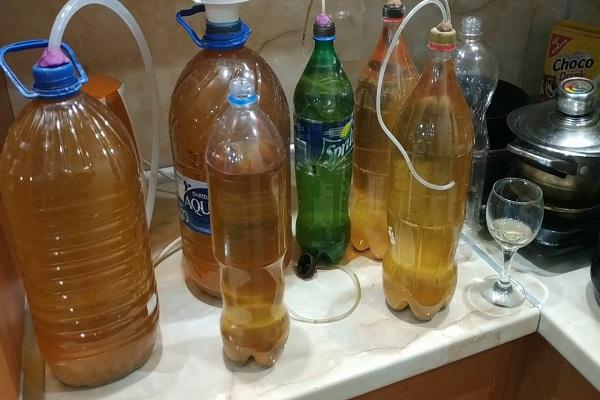
Pasteurization
Pasteurization - The next method to stop fermentation is heat treatment of the wine material. During heating at a high, more than 50 ° C, temperature, yeast dies and the risk of resumption of fermentation processes is eliminated. The method also allows you to disinfect the drink and prevent diseases. The procedure at home is carried out in a large container, planks of wood are placed on the bottom, water is poured, and a container of wine is placed. It is important that the liquid covers the level of the wine in the bottles.
The drink is heated to 50-60 ° C and counted for 15-20 minutes. Before the procedure, the wine is cooled to 10 ° C. At home, wine is heated in a water bath. Bottles with closed corks are placed in a container of cold water, a thermometer is lowered there, heated for 15-25 minutes.
The temperature should not exceed +68 ° С.
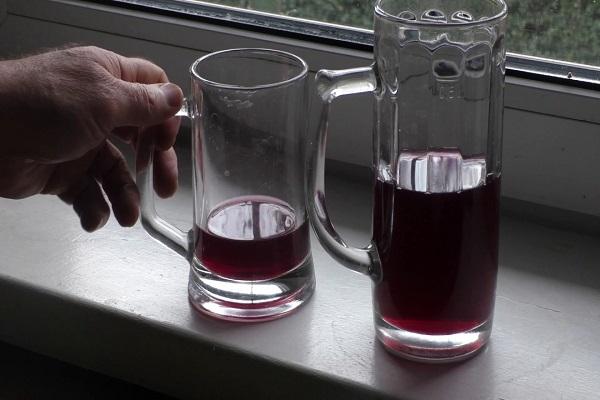
After it is kept for several minutes, the pan is removed, cooled to + 35 ° C, removed from the container. Then allow to cool to room temperature and remove. It is important to control the temperature during the process so as not to boil the drink.
The disadvantages of heat treatment are the deterioration of the taste of the drink and a decrease in its aroma.
Use of potassium sorbate
Fermentation is stopped with the help of the potassium salt of sorbic acid. This method is more suitable for wineries.
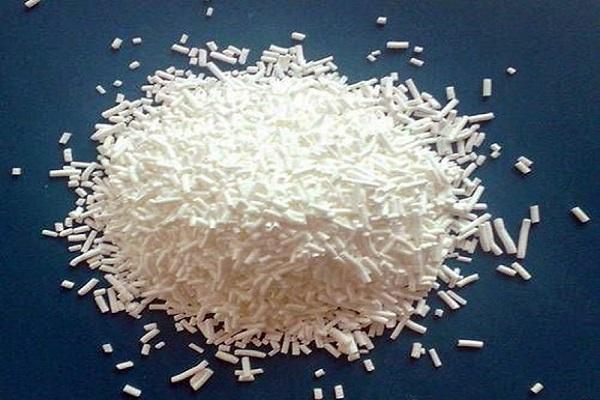
Potassium sorbate renders the yeast inactive, but does not completely kill it. In this case, the substance acts in such a way that the awakening or multiplication of yeast cells is excluded. After removing from the sediment, the drug is added together with sugar for a better taste. It is often used in conjunction with sulfur dioxide.
Using potassium bisulfite or Campden tablets
Preservatives are also used by winemakers as a fermentation inhibitor, but they do not completely stop the activity of wine yeast.They are able to kill extraneous bacteria, prevent disease.
At the same time, there is a danger that the remaining living cells will multiply, then fermentation will resume. When using these funds, you must observe the exact dosage of the drugs. A large dose leads to a deterioration in the taste and quality of alcohol.
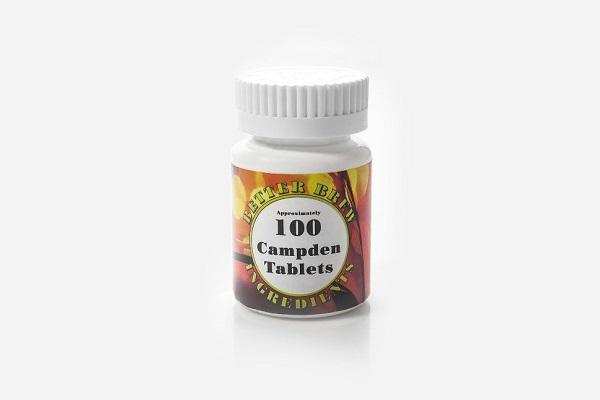
Is it possible to drink homemade wine during fermentation
Drinking young wine in small doses improves metabolism, increases appetite, helps to cope with sleep disturbances, stressful situations. The drink contains many useful substances, this refers to a fully ripened product.
Unfermented wine is only allowed to taste a little to determine the taste, degree of fermentation, strength. Drinking is not recommended until the drink fully withstands all stages of preparation. There are still many fusel oils and other impurities. It can harm the liver, gastrointestinal tract, cardiovascular system, and cause allergies.
